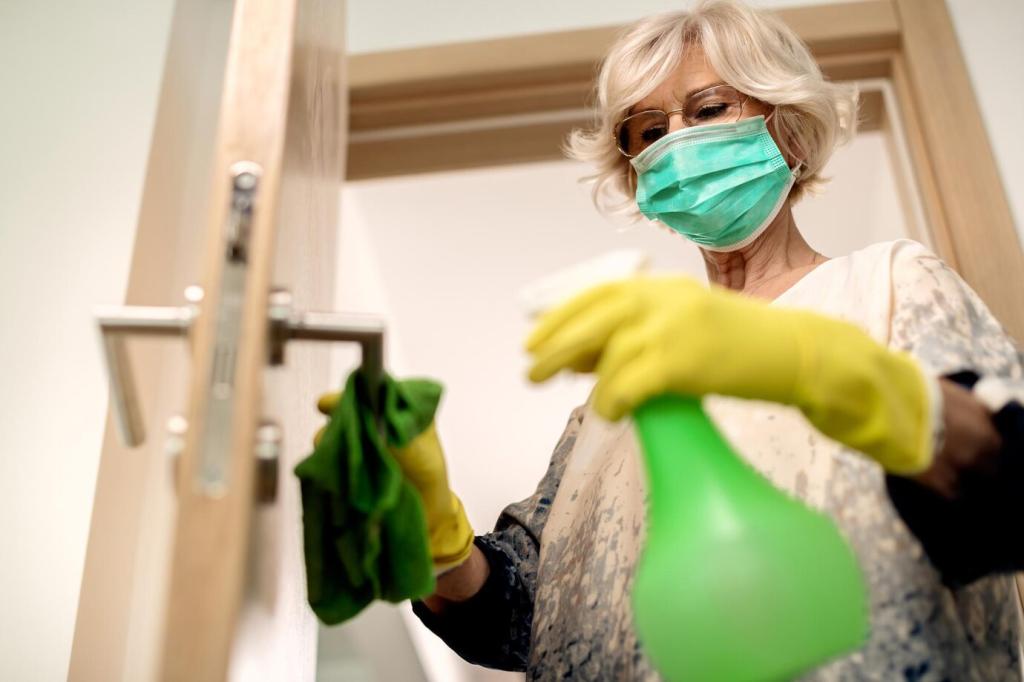Know Your Sustainable Materials
Hardwoods with oil or wax finishes prefer minimal moisture and pH-neutral cleaners, while bamboo appreciates quick-drying wipe-downs to prevent swelling. Cork hates standing water; treat it as a thirsty friend that needs soft, wrung-out cloths. Always clean with the grain, then buff dry thoroughly.
Know Your Sustainable Materials
Oil-finished wood benefits from periodic re-oiling and gentle soap solutions; waxed surfaces want soft cloths and solvent-free sprays. Water-based lacquer is tougher but still dislikes abrasives and ammonia. Test cleaners in an inconspicuous spot, and avoid silicone polishes that build residue and attract dust.



